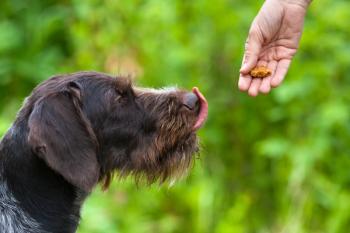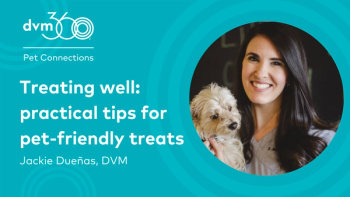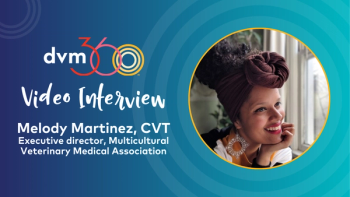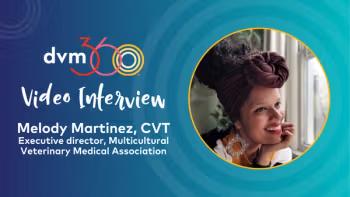
Feeding tube management and complications (Proceedings)
Does the use of feeding tubes have a place in everyday practice? We are all familiar with the use of feeding tubes for Hepatic Lipidosis cats, but how many times do we deal with the older animal with no obvious physical problem other than an unwillingness to eat adequate (in our opinion) amounts of food?
Indications for Tube Use
Does the use of feeding tubes have a place in everyday practice? We are all familiar with the use of feeding tubes for Hepatic Lipidosis cats, but how many times do we deal with the older animal with no obvious physical problem other than an unwillingness to eat adequate (in our opinion) amounts of food? What about the HBC that has a jaw fracture and is having trouble eating enough food to support themselves? As renal failure advances, the animals' appetite often decreases to such a level that this is a bigger concern than the renal failure. An animal being treated for cancer may either develop nausea from the chemotherapy or decreased appetite from the disease. These and many other scenarios are seen routinely in practice and could benefit from the placement of a feeding tube.
Types of Tubes
The most commonly placed feeding tubes are nasoesophageal, esophageal, gastrostomy and jejunostomy. All, with the exception of the nasoesophageal require some level of anesthesia, with the jejunostomy tube usually requiring surgical placement. Nasoesophageal and jejunostomy tubes can only be used under hospital supervision, while esophageal and gastrostomy tubes can be managed by owners at home after the initial reintroduction of food has been done in-hospital.
Esophageal tubes can be placed using minimal equipment following standard technique practices. Gastrostomy tubes can be placed blind using specialized equipment, placed with the aid of a gastroscope (percutaneous endoscopic gastrostomy or PEG) or surgically. Any of these tubes can be placed in any animal that can undergo anesthesia. Anesthesia time is typically 15-20 minutes., and they do not need to achieve a surgical plane of anesthesia, just enough so that jaw tone is lost. Esophageal strictures may preclude endoscopic placement of a feeding tube, but surgical placement can often be done. If the animal is not totally anorexic and not metabolically compromised (i.e. electrolyte disturbances, low phosphorus, low PCV etc) the tube can be placed and the animal discharged from the hospital to the owners care within 1-3 days.
Feeding can be started immediately with nasoesophageal tube, and within 12 hours esophageal, gastrostomy and jejunostomy tubes. This delay allows a temporary stoma to form around the tube insertion site prior to feeding. A complete feeding plan should be done for each animal with written feeding directions given to the owner. Because many owners are unfamiliar with the use of syringes and the feeding procedure itself, plan on doing an extended discharge for each animal. This should include tube maintenance, feeding directions and feeding amounts; this typically takes 30-45 minutes.
There are multiple veterinary recovery diets that are available in a gruel form that pass easily through most of the larger bore feeding tube (12 fr and higher). Sometimes adding as little as 1-2 tablespoons (15-30 ml) to the can of food will greatly increase ease of passage. If needed, homemade gruel diets can be prepared from commercial diets. The disadvantage of using these diets would be not knowing the caloric amount found in each ml of the final mixture, or the final volume achieved after mixing. These diets also tend to fall out of suspension after they've been mixed with water.
For long term use, place a PEG tube. After a stoma has formed around the rubber feeding tube (usually 3-4 weeks), the tube can be replaced with a low profile or foley type silicone feeding tube. A rubber catheter has a useful life of 12-16 weeks. This is adequate for most hepatic lipidosis cats and post surgical dogs, but this may not be enough time for a renal failure animal or HBC jaw fracture. The silicone catheters have a useful life of over 1 year, depending on maintenance and care. When they need to be replaced, another silicone catheter can simply be placed in the stoma site.
Mechanical Complications
Mechanical complications include both tube obstruction and premature removal of the tube or dislodgement from the site of placement. The most common problem, tube obstruction can be prevented in most cases by proper tube maintenance. Food should never be allowed to sit in the tube, and the tube should be flushed with warm water after EVERY feeding, or whenever gastrointestinal contents as aspirated through the tube as when checking residuals. When using the feeding tube to administer medications, only one medication at a time should be given through the tube, and it should be given separately from the food. This will help to prevent drug-to-drug interactions as well as drug-to-food interactions as not all medications and enteral foods are compatible with one another.
If the feeding tube becomes clogged either from insufficient flushing after feeding, or from hair accumulation through the holes in the end of the tube, first try to flush the clog out using warm water and the feeding syringe. Hold the tube firmly and push the water with force. If the clog is not bad, this may work. If it is still clogged, try switching to Coca-Cola in the feeding tube, and allow this to sit for a period of time. Some practitioners have suggested the use of pancreatic enzymes mixed with water and various other mixtures instilled into the tube to break up the clog.
This is what I use for stubborn clogs and is 100% effective in removal of the clogs. This tube un-plugging technique can be used with 20 fr or larger Pezzer gastrostomy tubes and 20 fr or larger esophagostomy tubes: Use with EXTREME caution...
Supplies:
10 fr polypropylene catheter
10-12 ml luer slip syringe
1" tape
o Cut a bevel on the end of the polypropylene catheter-this will be sharp! Measure the length of the catheter to either the site of the obstruction or the outside of the body wall. Mark with a piece of 1" tape. Do not pass the cut catheter past the body wall-it will perforate the stomach wall!
o Pass the cut catheter to the level of the obstruction; fill the syringe with warm water. Attach the syringe to the tube and use your fingers to pinch around the end of the feeding tube. Flush the water into the catheter with force may need to aspirate and flush repeatedly.
o If the plug has been in the tube for > 12 hours, you may need to carefully "ream" out the plug with the beveled end of the catheter, continue to try to flush the water through the catheter.
o This technique has always worked for me, and I've never had to replace a tube because it was plugged. The sooner the clients bring the animal in the better and quicker the results.
Premature tube removal or dislodgement is best prevented by choosing the most appropriate tube for the animal and using Elizabethan collars and wraps when appropriate. Whenever the location of the tube is in doubt, it should be checked radiographically. While most tubes are radiopaque, a sterile contract media (i.e. Omnipaque) can be infused through the tube to check for leaks into the peritoneal or thoracic cavity.
Gastrointestinal Complications
Some of the gastrointestinal complications seen with tube feeding are related to the feeding itself. Food that is administered too quickly, in too large an amount or at the wrong temperature can all cause nausea, vomiting or abdominal discomfort. These signs can also be related to the patients underlying disease process or a complication of medications the patient is receiving.
Liquid enteral diets are typically very low residue, and are likely to cause a soft stool if not actual diarrhea in a normal animal let alone one who is already ill. Likewise, most recovery diets, both liquid and gruel forms, are high in fat, a patient with impaired fat digestion and absorption may develop steatorrhea when fed these diets.
A cause of diarrhea not typically thought of is the medications that we are giving to the animals, whether they are orally or through the feeding tubes. Many liquid oral forms of medications are hypertonic or contain sorbital, a non-absorbable sugar, and may cause, at least in part diarrhea. We also need to remember that a number of commonly used antibiotics, analgesic agents and other drugs can cause nausea, vomiting and gastrointestinal ileus and may contribute to the discomfort our patients are feeling. Canned pumpkin, 5-15 ml per feeding will usually resolve the diarrhea. This can be prepared in ice cube trays and stored in a freezer bag until needed. The amount of each feeding will need to be adjusted accordingly.
Constipation is not an unusual complication seen in patients with feeding tubes. As they can be fairly weak from muscle loss and metabolic derangement, the development of constipation is not unexpected. Adding lactulose to the diet will often solve this problem, 1-2 ml per meal adjust as needed to maintain stool consistency.
Metabolic Complications
There are two types of metabolic complications that our patients can develop. The first is the result of the patient's inability to assimilate certain nutrients. This can best be anticipated by doing a proper nutritional assessment of the patient before developing the nutritional plan. The other type is seen with "Refeeding Syndrome"
Keeping in mind the changes the body has undergone while in starvation, when reintroducing food several areas need to be monitored closely to prevent the "Refeeding Syndrome". During recovery, excessively rapid refeeding (or hyperalimentation) can overwhelm the patient's already limited functional reserves.
Refeeding causes a shift in the body from a catabolic state where protein is the primary energy source to an anabolic state where carbohydrates are the preferred energy source. Administration of enteral or parenteral nutrition stimulates the release of insulin; this causes dramatic shifts in serum electrolytes from the extracellular space to the intracellular space, primarily phosphorus, potassium and to a lesser degree magnesium. Insulin promotes intracellular uptake of glucose and phosphorus for glycolysis. These electrolyte shifts can have a profound impact on metabolic functions within the body, phosphorus is used by the red blood cells as their primary source of energy in the form of 2,3 DPG, without this they die and you have hemolysis. Phosphorus is integral in the formation of ATP-the power source for most cells within the body, without this they can not function properly. Potassium is involved in the sodium/potassium pump, without adequate amounts, no muscle contraction/ relaxation can occur. Serum cobalamine is often low in cats that have small intestinal disease, pancreatic disease and hepatic lipidosis . Supplementation may be necessary even before enteral nutrition is started to allow adequate assimilation of nutrients within the intestine. The CRI method of feeding will help prevent many of the problems associated with Refeeding Syndrome.
Serum electrolytes, phosphorus and packed cell volume should be monitored closely. A base line value should be established before treatment is started then once daily thereafter, unless dramatic changes are seen. If changes are seen in any of these values, supplementation needs to be started immediately. This can either be intravenous or through the feeding tube. Refeeding Syndrome is one of the most dramatic "side-effects" and can lead very quickly to death.
Metabolic complications of any type are less likely to occur if estimated caloric needs are conservative. Current recommendations are to initiate feeding at caloric amounts equal to the patient's calculated resting energy requirements without the addition of any "illness requirements".
Infectious Complications
They types of infectious complications that can occur in tube fed patients include contamination of the enterally fed formulas, peristomal cellulitis, septic peritonitis and aspiration pneumonia.
Microbial contamination of the food is easily avoided by following basic hygiene in preparation and storage of the food. Blenderized foods should be prepared daily, and opened commercial liquid diets should be kept refrigerated and discarded after 48 hours. When food is being delivered via a syringe pump, no more than 6 hours worth of food should be set-up at a time. One of the biggest sources of contamination is inadequate cleaning of equipment used for preparation and delivery of foods. Syringes, containers, and tubing used for preparing, storing and delivering food should be discarded after use. Things that are reused, such as blenders and storage containers, should be cleaned thoroughly and preferably sterilized each time they are used. The equipment used to deliver the food should also be replaced every 24 hours, this includes the syringes and delivery tubes and if the food is hung, the administration bag.
Peristomal cellulites can be seen with esophagostomy, gastrostomy and jejunostomy tubes. This can usually be avoided by insuring that the tube is not secured too tightly to the body wall, and by keeping the site clean and protected. Septic peritonitis can develop in patients where the gastrostomy or jejunostomy tube has become dislodge or removed before a permanent stoma had formed. Proper tube selection can help prevent this problem, button or balloon size should be large enough to secure the tube in the stomach lumen. Wraps of Elizabethan collars may be necessary to prevent the patient from accidentally or intentionally prematurely removing the tube. Ensuring that a mature stoma has formed prior to tube removal can help to prevent peritonitis. Patients that are malnourished or are receiving medications that impair would healing may take longer to develop a mature stoma than would healthy patients.
Aspiration pneumonia can be seen with patients that have previously developed aspiration pneumonia, patients with impaired mental status, patients with neurologic injuries, patients with reduced or absent cough or gag reflexes and those on mechanical ventilation. Feeding patients in any of these categories pre-pylorically puts them at risk of aspiration of food. Viable alternatives would include jejunostomy tubes and parenteral nutrition. Lastly, caution should be used when feeding patients with nasoesophageal or esophagostomy tubes using constant rate infusion. These types of tubes can be vomited up and the tip of the tube could relocate in the pharynx and place the patient at risk for pulmonary aspiration.
Hospital Management
Patients should be allowed out to exercise for 20-30 minutes approximately 1 hour before feeding, 2-3 times daily. This can be started even while the CRI feedings are being done, just disconnect the syringe pump, flush the line with water and cap. Exercise has been found to greatly enhance both gastric motility and patient attitude.
Very few patients do poorly after discharge, particularly if good communication is established with the owners and regular rechecks are scheduled. Rechecks should be scheduled with the technician managing the case for every 2 weeks until the tube is removed. If this will be long term maintenance (months to years), these rechecks can become less frequent and the animal stabilizes and the owners become more comfortable with tube maintenance and management.
Potential Post Discharge Complications
Granulation tissue normally forms around the tube site on the outside and may be quite pink and can even bleed when handled. It is important to let clients know this is normal and to expect it, this tissue is what allows the hole to close after the tube is removed. We have found in cats with dark hair coats (including tabbies) that the hair will grow in a dark ring around the tube site and thicker than the surrounding hair regrowth. Many clients will think that this is necrosis and become very concerned, a quick warning to expect this will greatly ease their minds.
What do you do about the patient that insists on chewing on its tube? A simple solution is to place a baby's t-shirt on a cat, usually an infants size 6-9 months works well for most. For large patients, larger shirts can be used. Use a t-shirt that has a fitted neck, not the lap shoulders. Once the t-shirt is on, place a piece of 1" porous tape near the end of the feeding tube, tuck the tube up under the t-shirt and use a safety pin to pin the tape to the t-shirt. This makes removal easier for feeding, and decreases the risk of pinning through the tube and damaging it.
Once the patient goes home, tube feedings are continued-even after the patient begins self-feeding. Owners are given instructions to always have fresh food and water available for the convalescing patient and when the desired weight is reached, tube feedings are decreased by 25-50% depending on the oral intake. The tube can be removed after the patient has reached its desired weight, had recovered for the trauma or has finished chemotherapy treatment and has been totally self-feeding for 2 weeks without showing any signs of weight loss. Many feeding tubes can be maintained long term, and the same stoma hole used for repeated tube placements.
Conclusion
Typically owners are very happy with the results they see when using a feeding tube and the animals feel much better. They do require routine daily care such as cleaning around the tube site and flushing of the feeding tube with water, but the tubes need not be used everyday to feed the patient. The use of feeding tubes can give many clients the benefit of enjoying their pet for a longer period of time, and having a better quality of life for both of them.
References
Donoghue S, Vet. Clin. NA Sm. Anim. Pract. 1989;19:47. Guilford G, et.al. Sm. An. GE 1996: 766 Dimski D, Vet. Clin. NA Sm. Anim. Pract. 1995;25;357 Lewis LD, et.al. Sm. An. Clin. Nutr. 1987:5 Marks SL, et. al. Comp Cont. Ed. Pract. Vet 1994; 16 (8):971 Marks SL, et. al. Comp Cont. Ed. Pract. Vet 1994; 16(10):1287 Wills JM, et.al. Waltham Book Clin. Nutr. Dog & Cat 1994; 56
Monitoring the Enterally Fed Patient to Maximize Benefits and Minimize Complication In: Michel KE IVECCS Proceedings 2006.pp 495- 498
Newsletter
From exam room tips to practice management insights, get trusted veterinary news delivered straight to your inbox—subscribe to dvm360.






